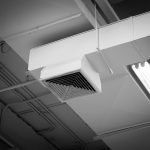Continue reading “Product Highlight: 47X Series Handheld Test Instruments”
Advances in HVAC Test Equipment: The Importance of Diffuser Calibration for Flow Hood Measurements
Introduction
Objective
 The objective for this writing is to inform HVAC technicians and contractors about the limitations of testing equipment currently used for testing, adjusting, and balancing HVAC systems. The need for more accurate instruments is immediate as energy programs are moving toward net-zero energy building efficiencies.
The objective for this writing is to inform HVAC technicians and contractors about the limitations of testing equipment currently used for testing, adjusting, and balancing HVAC systems. The need for more accurate instruments is immediate as energy programs are moving toward net-zero energy building efficiencies.
In doing so, HVAC technicians and contractors will struggle with tighter specifications as they tune HVAC systems with instruments that fail to provide the required accuracy and versatility. Continue reading “Advances in HVAC Test Equipment: The Importance of Diffuser Calibration for Flow Hood Measurements”
Air Balancing HVAC Systems
Methods of Air Balancing
Air balancing a distribution system is needed to properly direct the air flow in order to optimize the system’s design. Flow rates are tested, adjusted, and  balanced as cubic feet per minute (CFM) or cubic meters per hour (m3/h). There are two traditional methods for balancing airflow at the terminals. The first is sequential balancing, which involves setting the zone and branch dampers in sequence. However, the most common method of air balancing is called proportional balancing.
balanced as cubic feet per minute (CFM) or cubic meters per hour (m3/h). There are two traditional methods for balancing airflow at the terminals. The first is sequential balancing, which involves setting the zone and branch dampers in sequence. However, the most common method of air balancing is called proportional balancing.
Balancing a HVAC System with Multiple Diffuser Types
The Problem
- Standard air flow hoods do not correct for diffuser type when balancing a system.
- Proportional balancing is extremely difficult when a mixture of diffusers are present, due to the inaccuracy of standard hoods on slot diffusers.
- Below is a sample of diffusers tested on Dwyer’s Precision Air Calibration Station (Figure A) with a standard air flow hood followed by the Dwyer SMART Air Hood™ Balancing Instrument (Series SAH).
Figure A: Precision Air Hood Calibration Station
Continue reading “Balancing a HVAC System with Multiple Diffuser Types”




